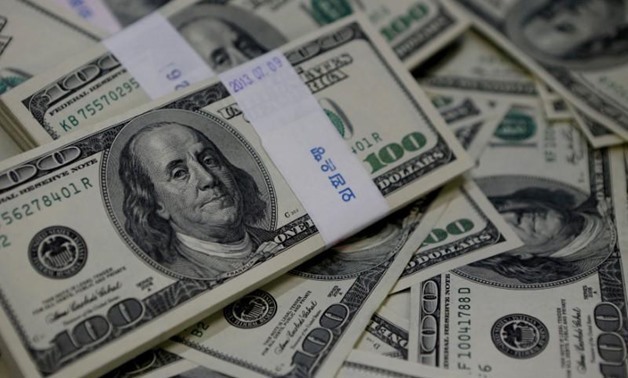
U.S. one-hundred dollar bills are seen in this picture illustration, August 2, 2013 - REUTERS/Kim Hong-Ji/Illustration
LONDON - 12 June 2018: The dollar’s early bounce fizzled on Tuesday, as markets saw few concrete measures emerging from the U.S.-North Korea summit and waited for guidance from two of the world’s top central banks later this week.
U.S. President Donald Trump said he had formed a “very special bond” with North Korean leader Kim Jong Un at the meeting, but the Korean stock and currency markets were broadly flat and U.S. debt, which tends to benefit from geopolitical uncertainty, held steady.
“This is more of a side show and headline grabber rather than yielding anything substantive with markets more worried about the developments at the G7 summit,” said Viraj Patel, a currency strategist at ING in London.
Against a basket of rivals .DXY, the dollar turned negative on the day at 93.53 after bouncing 0.3 percent to 93.89 in early trading in Asia, its highest since June. 5.
Against the Japanese yen JPY=EBS, the dollar was trading a quarter of a percent higher at 110.32 yen, its highest in nearly three weeks and above a 200-day moving average.
Trump said the meeting in Singapore had gone “better than anybody could have expected” and he anticipated that the denuclearization process would start “very, very quickly”.
Currency markets had a slightly more risk-on mode with perceived safe-haven currencies such as the Japanese yen and the Swiss franc CHF=EBS weaker on the day while relatively high yielding currencies such as the Australian dollar AUD=D3 posting modest gains.
“Markets have a risk-on tone as the Trump-Kim meeting has so far produced much positive symbolism, but little in the way of substance,” wrote Adam Cole, chief currency strategist at RBC Capital Markets.
Of more importance to global markets will be any clarity on the outlook for U.S. and European monetary policy this week at a time when policymakers have struck to their optimistic stance despite the darkening tensions around global trade prospects.
The U.S. Federal Reserve holds a two-day meeting starting on June 12, and it is widely expected to raise interest rates for the second time this year. The focus is on whether the central bank will hint at raising rates a total of four times in 2018.
The European Central Bank also meets on June 14, when it could signal intentions to start unwinding its massive bond purchasing program.
Against a buoyant dollar, the euro was 0.2 percent lower at $1.1763 EUR=EBS.

Comments
Leave a Comment